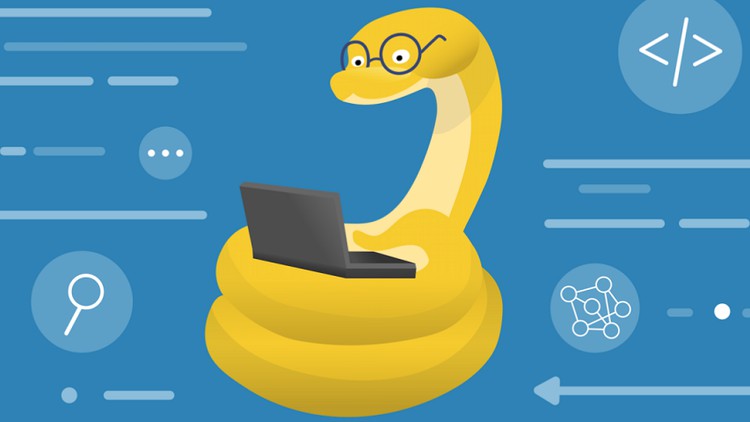The Ultimate Python Guide for Beginners
- Description
- Curriculum
- FAQ
- Reviews
This course has been specifically designed for beginners who have been looking to obtain a hands-on learning experience with Python, teaching you concepts of programming right from the basics and Python being the most simplest language for a beginner to start with.
It is the right time to start learning the in-demand Python language because of its gaining popularity in the fields on Data Science, Backend Development, Internet of Things, etc. Keep yourself equipped with the most sought-after skills!
A lot of exercise problems, programming lectures, PDF notes have been included to provide you with a great learning experience!
You will work on a project at the end of this course, which has been designed for you to implement all the topics which you would have mastered by the end of this course to give you enough confidence to start writing your own independent programs in Python.
You will be learning the basics of python in this course.
Python is one of the fastest growing language
Python is interpreted, object oriented, high level, procedure oriented language
It has different versions
The reason behind it is there are huge number of libraries available in the market, many companies and developers are using it and it can be implemented in many areas.
It is general Purpose language as it can be used in Machine learning, GUI, Software Development, Web development and many more.
Google, YouTube, Dropbox, NASA, Yahoo use python.
If you want to learn how to write Python programs like a pro, code python like a boss, solve real-world problems, or automate repetitive and complex tasks, read on.
By the end of this course you will be able to create Python scripts with ease. You’ll learn how to take tedious and repetitious tasks and turn them into programs that will save you time and simplify your life.
Here is what you will get and learn by taking this Python Programming course:
Introduction of Python
History of Python
Features that make Python so Popular
Limitations of Python
Variables
Data Types
Character Sets
Tokens
Keywords
Identifiers
First Python Program
Basic Operations
Conditional Statements
Loops
String
List
Tuple
Dictionary
file Handling
First game
-
26Introduction of strings and string slicingVideo lesson
-
27String OperatorsVideo lesson
-
28Membership Operators and Comparison OperatorsVideo lesson
-
29String Functions part1Video lesson
-
30String Functions part2Video lesson
-
31String ImplementationVideo lesson
-
32String Implementation 2Video lesson
-
33Assignment4Text lesson
-
34solution of Assignment 4Video lesson
-
35List IntroductionVideo lesson
-
36Creating and Accessing listVideo lesson
-
37Creating list from existing sequenceVideo lesson
-
38Accessing list elementsVideo lesson
-
39Difference in String and listVideo lesson
-
40Implementation of listVideo lesson
-
41Assignment5Text lesson
-
42solution of Assignment 5Video lesson
-
43Introduction of tuplesVideo lesson
-
44Change Tuple ValuesVideo lesson
-
45Loop through a tuple and Check if item existsVideo lesson
-
46Create tuple with one item , Join two tuplesVideo lesson
-
47Tuple Constructor and Tuple methodsVideo lesson
-
48Implementation of tuplesVideo lesson
-
49Assignment6Text lesson
-
50Solution of Assignment 6Video lesson
-
51Introduction of DictionaryVideo lesson
-
52Creating a DictionaryVideo lesson
-
53Accessing Elements of Dictionary and Traversing a DictionaryVideo lesson
-
54Characteristics of a DictionaryVideo lesson
-
55Dictionary MethodsVideo lesson
-
56Implementation of DictionaryVideo lesson
-
57Assignment7Text lesson
-
58solution of Assignment 7Video lesson

External Links May Contain Affiliate Links read more





